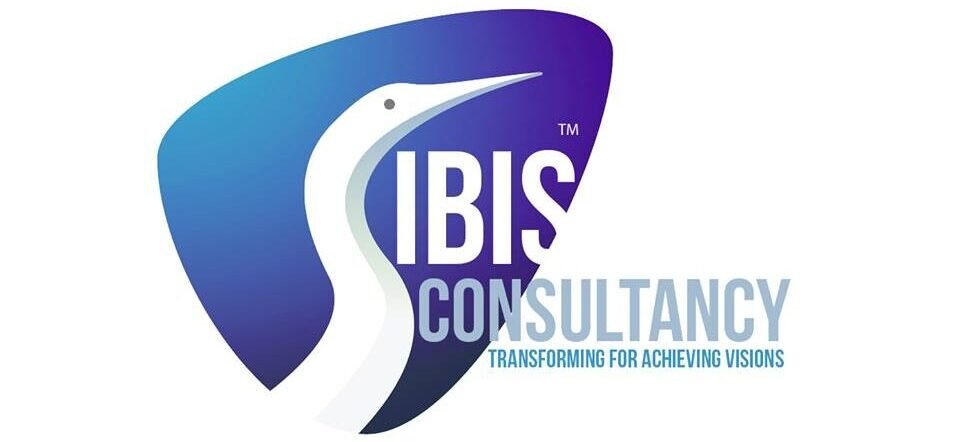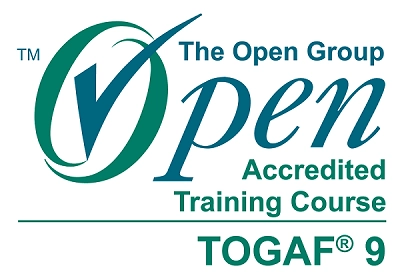Implementing TOGAF® 9 in a Tool
- Course Duration: 5+h
- qualification: TOGAF
About this course
Introduction
Learn to implement the TOGAF 9 framework in practice with the award-winning TOGAF training team at Good e-Learning!
TOGAF is the world’s leading methodology for enterprise architecture, and an extremely popular choice for practicing architects. Still, there’s a big difference between understanding the theory behind TOGAF and being able to use it in real-life organizations!
Created by Orbus Software, this course provides an interpretation of how to apply TOGAF using iServer, a world-class business and IT transformation suite, as the context.
Who is this course aimed at?
- TOGAF students who require an understanding of how to implement their new knowledge in practice
- TOGAF practitioners interested in studying the Orbus Software iServer suite
- Students and practitioners looking for a practical understanding of the TOGAF Architecture Development Method (ADM) and how EA concepts can be supported by tools
- Anyone looking for a practical understanding of how to tailor key concepts within TOGAF
- Enterprise architects and stakeholders seeking to understand how to collaborate on essential projects
What will you learn by taking this course?
- How the key elements of TOGAF can be tailored in order to suit specific projects
- How the concepts of TOGAF can be supported by tools
- How to understand stakeholder requirements and concerns
- How tools can support analysis and communication within the ADM
Why should you take this course?
- As popular and comprehensive as TOGAF is, its successful implementation requires a practical understanding of the framework within business environments
- Being able to tailor and apply TOGAF can help enterprise architects to unlock significant career and networking opportunities
- Orbus Software is a leading training provider with a long history of providing world-class TOGAF courses
- Good e-Learning is an award-winning online training provider
- The course comes with a number of online training assets, including interactive slides and instructor-led videos. Each asset was designed with help from highly experienced TOGAF practitioners
- Good e-Learning offers expert support on course content and technical issues
- Good e-Learning courses are accessible via the Docebo app, so learners can study anywhere, any time
Course Outline
TOGAF 9 Critical Breakdown and Tool Translation – A recap of the high-level areas of TOGAF from a tool perspective, how TOGAF concepts can translate practically within a tool, and how to distinguish tool requirements.
The concept of an ‘architecture vision and strategy’ from an organizational and tool perspective.
The module also looks at how iServer supports artifact creation, how to articulate the strategic context of an architecture into an iServer model, and how iServer functionality supports strategy alignment.
Why an organization may want to tailor TOGAF, and how iServer can support a tailored TOGAF metamodel.
The module also examines how iServer supports TOGAF viewpoint customization and extension based on specific business requirements and questions.
How iServer can support the architecture delivery stages of the ADM, and how architectural models are created.
How different types of analysis and reporting can be used within a tool, and how a tool can support architectural roadmaps.
The module also examines how a tool can support the socialization of architectural artifacts, data, and deliverables.
An overview of how the functionality and content of iServer can support the practical application of TOGAF.
The module also provides a recap of the course’s key takeaways.
What do you get?
- Created by an EA expert
- Certificate of completion
- Course duration: 5+ hours
- Access period: 6 months
- Tutor support
- Quizzes & revision exams
FAQs
Who are Orbus Software?
Headquartered in London, and founded in 2004, Orbus Software is an independent software vendor and a globally recognized leading provider of software and services for Business and IT Transformation.
Orbus Software’s customers are predominantly large, blue chip organizations located across the Americas, EMEA, Australasia and the ASEAN, and span all industry verticals.
What is the iServer Business and IT Transformation Suite?
The iServer Business and IT Transformation Suite comprises of iServer, a leading enterprise modeling and collaboration platform, as well as solutions for 4 business and IT management practices: Enterprise Architecture, Strategic Portfolio Management, Business Process Analysis and Governance, Risk and Compliance.
Additionally, Orbus provide out of the box support for a range of best practice standards and frameworks, including TOGAF, IT4IT, ArchiMate, BPMN, COBIT 5, ITIL and more.
What is enterprise architecture?
‘Enterprise architecture’ involves creating ‘architectures’ of IT infrastructures, including how they are put together and how different elements interact.
This provides a clearer sense of perspective which organizations can use to align architectures with business goals.
This can be essential for supporting large-scale enterprise transformation, IT growth, and organization-wide change.
What is TOGAF?
‘The Open Group Architecture Framework’ is a leading enterprise architecture framework.
It provides a systematic approach for designing, building, and adapting enterprise architectures – one that has been successfully applied across countless organizations and industries around the world.
Who owns the TOGAF standard?
The Open Group works with customers and suppliers of technology products and services, and with consortia and other standards organizations to capture, clarify, and integrate current and emerging requirements, establish standards and policies, and share best practices.
What kind of organization is the TOGAF standard suitable for?
The TOGAF standard is used by organizations of virtually every size, sector and industry.
Enterprise architecture is becoming a much more common practice for maximizing efficiency and managing complex business strategies, and this has only led to an increase in demand for TOGAF certified architects.
However, while any organization can use the TOGAF standard, it takes a certified architect to use it properly.
In what countries is the TOGAF standard popular?
The TOGAF framework is popular all over the world. You can find certified professionals in over 130 countries, and TOGAF architects can find work almost anywhere.
That being said, there are certainly several regions where the TOGAF standard has more of a presence.
The majority of TOGAF certifications are earned in the UK, USA, India, the Netherlands and Australia.
How can TOGAF benefit businesses?
The clarity offered by TOGAF helps businesses to pursue enterprise transformation, IT growth, and organization-wide change with optimized efficiency and focus.
It also helps users to ensure that their IT infrastructures are fully aligned with essential business goals.
What you will learn
Introduction to TOGAF® Tools:
- Understand the role of enterprise architecture tools in supporting TOGAF® implementation. Learn about different types of tools available in the market and their capabilities for modeling, analysis, and visualization.
Selection of Tools:
- Gain insights into the process of selecting enterprise architecture tools that align with the organization’s needs and objectives. Learn how to evaluate tool features, functionality, scalability, and compatibility with TOGAF® requirements.
TOGAF® Tool Certification:
- Explore tools that are certified by The Open Group for compliance with the TOGAF® standard. Understand the benefits of using certified tools and how they facilitate adherence to TOGAF® guidelines and best practices.
Tool Integration:
- Learn how to integrate enterprise architecture tools with other IT management systems and processes. Understand the importance of interoperability and data exchange between tools for effective architecture governance and decision-making.
Architecture Modeling:
- Gain hands-on experience in using tools to create and manage architecture models based on the TOGAF® Architecture Development Method (ADM). Learn how to capture and represent architectural artifacts, views, and viewpoints using standardized notations and languages.
Repository Management:
- Understand the role of architecture repositories in storing and managing architecture artifacts, models, and guidelines. Learn how to establish and maintain a centralized repository that supports collaboration, version control, and reuse of architecture assets.
Visualization and Analysis:
- Explore visualization and analysis capabilities of enterprise architecture tools for communicating architecture insights and performing impact analysis. Learn how to generate reports, dashboards, and diagrams to support decision-making and stakeholder communication.
Governance and Compliance:
- Learn how to use enterprise architecture tools to enforce architecture governance and ensure compliance with TOGAF® guidelines and standards. Understand how tools can facilitate review, approval, and monitoring of architecture initiatives and artifacts.
Best Practices and Case Studies:
- Analyze best practices and case studies of successful TOGAF® implementations using enterprise architecture tools. Learn from real-world examples and experiences of organizations that have leveraged tools to support their architecture initiatives.
By completing the “Implementing TOGAF® 9 in a Tool” course, participants will have gained practical knowledge and skills to leverage enterprise architecture tools effectively in support of TOGAF® implementation. They will be equipped with the tools, techniques, and best practices needed to drive successful architecture initiatives and deliver business value.
Benefits of this course
Efficient TOGAF® Implementation:
- Participants learn how to leverage enterprise architecture tools to streamline the implementation of the TOGAF® framework within their organizations. This leads to more efficient architecture development processes and better alignment with business objectives.
Enhanced Collaboration:
- By using enterprise architecture tools, teams can collaborate more effectively on architecture initiatives. These tools provide centralized repositories for storing and managing architecture artifacts, promoting collaboration and knowledge sharing among team members.
Improved Decision-Making:
- Enterprise architecture tools offer visualization and analysis capabilities that help stakeholders make informed decisions. Participants learn how to use these tools to generate reports, dashboards, and diagrams that facilitate decision-making and stakeholder communication.
Increased Productivity:
- Automation features in enterprise architecture tools help automate repetitive tasks, saving time and effort for architecture teams. Participants learn how to leverage these features to increase productivity and focus on higher-value activities.
Better Governance and Compliance:
- Enterprise architecture tools support architecture governance by providing mechanisms for review, approval, and monitoring of architecture initiatives. Participants learn how to use these tools to enforce compliance with TOGAF® guidelines and standards, ensuring consistency and quality in architecture artifacts.
Enhanced Visibility and Transparency:
- Using enterprise architecture tools provides greater visibility into architecture initiatives and their impact on the organization. Participants learn how to use tools to track progress, identify bottlenecks, and communicate the value of architecture to stakeholders.
Cost Savings:
- Implementing TOGAF® with enterprise architecture tools can lead to cost savings by reducing manual effort, improving productivity, and minimizing rework. Participants learn how to optimize tool usage to maximize return on investment and achieve cost efficiencies.
Adaptability to Change:
- Enterprise architecture tools provide flexibility and adaptability to changing business needs and technology trends. Participants learn how to use tools to model different scenarios, perform impact analysis, and support strategic decision-making in dynamic environments.
Competitive Advantage:
- Organizations that effectively implement TOGAF® with enterprise architecture tools gain a competitive advantage by improving agility, innovation, and responsiveness to market changes. Participants learn how to leverage tools to drive business success and differentiation.
Professional Development:
- Completing the course enhances participants’ skills and knowledge in enterprise architecture and tool implementation. This positions them as valuable assets to their organizations and opens up career advancement opportunities in architecture and related fields.
Overall, the “Implementing TOGAF® 9 in a Tool” course equips individuals and organizations with the knowledge, skills, and tools needed to leverage enterprise architecture tools effectively in support of TOGAF® implementation. It leads to more efficient, collaborative, and impactful architecture initiatives that drive business value and competitive advantage.

